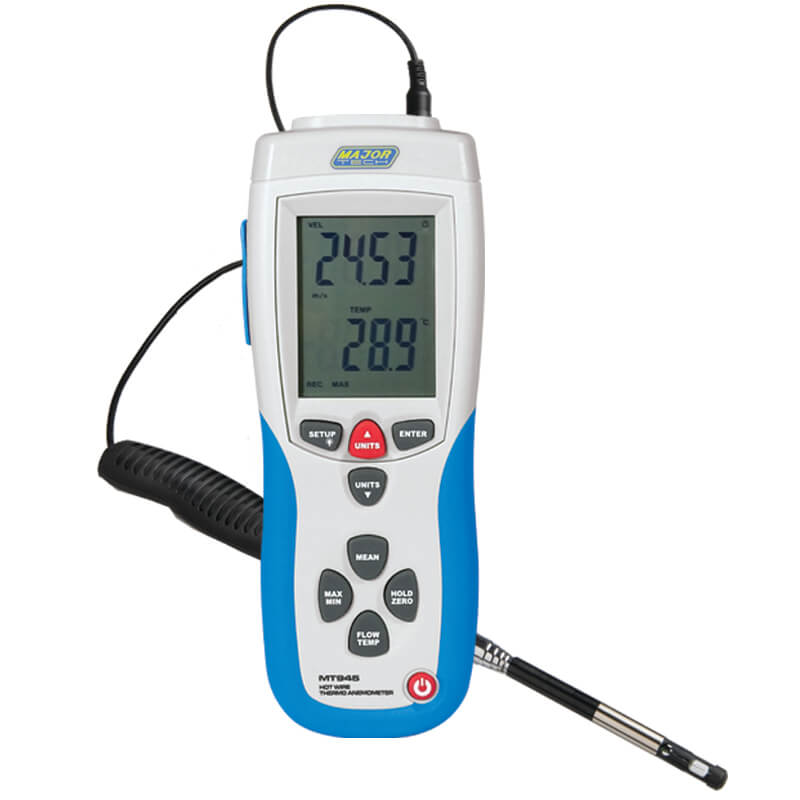Comprehending Different Kinds Of Anemometers for Various Applications
Comprehending Different Kinds Of Anemometers for Various Applications
Blog Article
Checking Out the Functions and Advantages of Anemometers for Weather Enthusiasts and Professionals
From cup anemometers to sonic anemometers, each type brings its special collection of applications and benefits, losing light on numerous facets of climatic conditions. As we delve into the features and advantages of anemometers, a much deeper understanding emerges not just of prevailing climate sensations however also of the broader implications for markets like wind energy manufacturing and ecological research.
Value of Anemometers in Weather Condition Tracking
Anemometers play a vital role in climate tracking by offering precise dimensions of wind speed, assisting in forecasting and understanding climate patterns. These tools, ranging from conventional mug anemometers to modern ultrasonic anemometers, are important for meteorologists, researchers, and weather fanatics alike. By determining wind rate, anemometers help in establishing the intensity of climate sensations such as storms, tornadoes, and hurricanes. In addition, they give important data for aeronautics, maritime procedures, and numerous industries that are delicate to wind problems.

Sorts Of Anemometers and Their Applications
The most common types of anemometers consist of cup anemometers, vane anemometers, hot-wire anemometers, and ultrasonic anemometers. Mug anemometers consist of 3 or four mugs placed on horizontal arms that turn with the wind, determining its speed. Vane anemometers, on the various other hand, make use of an openly rotating vane to align with the wind instructions, providing both wind speed and instructions dimensions.
Each kind of anemometer has its distinct benefits and applications. Mug anemometers are durable and suitable for basic weather condition monitoring, while vane anemometers are favored for directional dimensions. Hot-wire anemometers are delicate to low air speeds, making them ideal for indoor settings. Ultrasonic anemometers are non-intrusive and use high precision, often used in study and specialized climate monitoring applications. Recognizing the features and applications of each kind of anemometer is essential for picking the most ideal tool for specific climate keeping track of demands.
Benefits of Utilizing Anemometers in Projecting
In meteorology, the usage of anemometers supplies important benefits for enhancing the precision of weather forecasting. Anemometers measure wind speed and direction, providing essential data for predicting climate patterns. By integrating wind information into projecting models, meteorologists can much better comprehend the movement of weather systems, expect modifications in atmospheric problems, and issue extra exact projections.
Moreover, anemometers play an important role in assessing possible weather condition hazards. Keeping an eye on wind rates helps forecasters predict serious weather condition occasions such as storms, twisters, and winter season storms with greater precision. This early warning system allows authorities to release timely signals and execute needed precaution, reducing the dangers to life and residential property.
In addition, anemometers help in enhancing renewable power manufacturing. By evaluating wind patterns, meteorologists can determine ideal places for wind ranches and anticipate energy output, adding to the effective generation of wind power.

Anemometers in Wind Power Production
Provided the essential duty anemometers play in giving exact wind data for weather condition projecting and risk analysis, their relevance includes the world of wind power manufacturing. Anemometers are crucial tools in the area of wind energy, where the measurement of wind rate and direction is important for establishing the feasibility and effectiveness directory of wind turbine installations. By visit this site precisely gauging wind rates at differing heights, anemometers assist maximize the positioning and style of wind generators to make best use of energy outcome.
In wind ranches, anemometers are purposefully placed to accumulate real-time wind information that is used to examine the potential power manufacturing of a site. This information is instrumental in figuring out the financial stability of wind power tasks and in forecasting energy generation to make sure grid stability. In addition, anemometers help in keeping an eye on wind problems to optimize generator efficiency, avoid damages from high winds, and guarantee the safety and security of employees operating in the area of wind turbines.
Enhancing Weather Condition Comprehending With Anemometers

Anemometers play a vital role in enhancing our understanding of microclimates. These localized climate condition can vary substantially from wider local forecasts, making it important to have accurate data for details locations. anemometer. By tactically positioning anemometers in various locations, scientists can collect comprehensive info on how wind behaves in different surfaces, city settings, or bodies of water
Furthermore, anemometers add to enhancing weather forecasting models by supplying real-time data on wind habits. This details is especially beneficial for anticipating serious weather condition events, maximizing agricultural methods, and sustaining markets like air travel and maritime navigation. On the whole, anemometers are invaluable instruments that allow us to dive much deeper right into the complexities of weather systems, inevitably causing more better-informed decisions and exact predictions.
Conclusion
To conclude, anemometers play an essential function in climate monitoring and projecting by determining wind rate and direction. They are necessary devices used by climate enthusiasts and professionals to gather exact information for anticipating weather patterns and analyzing possible effects. Anemometers also have applications in wind energy production, more highlighting their relevance in both meteorology and sustainable power markets. On the whole, anemometers add to boosting our understanding of weather condition phenomena and improving forecasting abilities. anemometer.
From mug anemometers to sonic anemometers, each type brings its special collection of advantages and applications, shedding light on different aspects of atmospheric conditions. These instruments, varying from typical mug anemometers to contemporary ultrasonic anemometers, are essential for meteorologists, scientists, and climate enthusiasts alike. The most common kinds of anemometers include cup anemometers, vane anemometers, hot-wire anemometers, and ultrasonic anemometers. Mug anemometers are durable and ideal for basic weather monitoring, while vane anemometers are favored for directional measurements. Anemometers are important tools in the area of wind energy, where the measurement of wind click resources rate and instructions is vital for establishing the feasibility and effectiveness of wind generator installations.
Report this page